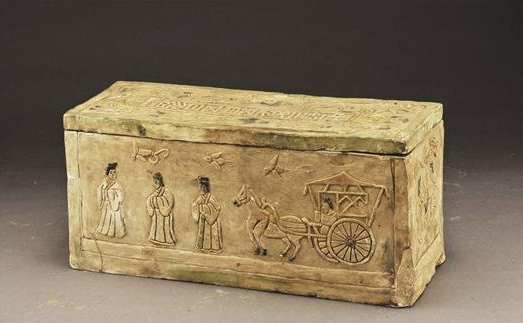
From April 6 to June 17, a Taoism Cultural Relics Exhibition will be at the Hubei Provincial Museum. A total of 230 relics from Hunan, Hubei and Wudang Mountains are on display, free of charge for visitors. Among them, 90 pieces from Wudang Mountains make their debut in the exhibition.
"This exhibition is a large scale Taoism exhibition that can stir the depth of one's soul," said Wang Jichao, director of the Displaying Department of the Hubei Provincial Museum.
This year marks the 600th anniversary of the major overhaul of Wudang Mountains and the exhibition serves as a ceremony to celebrate it.
The exhibits are mainly antiques from the Qin Dynasty (B.C.221-B.C.206) or before, ranging from carved stones from New Stone Age to the masterpieces of Qi Baishi (1863-1957).They demonstrate the development of Taoism, Taoist alchemy, and other rituals. Statues from the Ming Dynasty (1368-1644) bestowed by emperors make up a large part of the relics from Wudang Mountains.
The Bamboo Slip Lao Tzu from the Guodian Chu Tombs in Hubei is worth more than five billion yuan according to an expert. The price for Chinese traditional paintings from Qi Baishi comes at about ten million yuan or more in the market.
The most eye-catching exhibit is the acupoint-marked bronze figure from the Ming Dynasty (1368-1644). Its height is 86.5cm with 354 acupoints marked on it. The figure educates viewers about feet acupoints. The bronze figure on display is estimated to have been made after the Zhengtong period (1436-1449) in the Ming Dynasty (1368-1644).There are only two acupoint-marked bronze figures left, one of which is in the Palace Museum in Beijing.
Several Taoism exhibitions have previously taken place in Chicago, Hong Kong and Japan, none of which compare to the scale of this year’s.
Visitors to the Taoism Cultural Relics Exhibition can not only view photographs of the relics but can also appreciate the antiques up-close.
The Taoism Cultural Relics Exhibition focuses on the development of primitive Taoism and its influence over Taoist culture.
Taoism is an ancient religion rooted in Chinese customs, which was founded 2,000 years ago as a religion of unity and opposites. Tao is translated as The Way, which is the creative principle of the universe. All things are unified and connected in Tao.
The palaces and temples in Wudang, which were built as an organized complex during the Ming Dynasty (1368-1644), contain Taoist buildings from as early as the 7th century. It represents the highest standards of Chinese art and architecture over a period of nearly 1,000 years. The monasteries and buildings were made a UNESCO World Heritage Site in 1994.





Why not rent a boyfriend, or girlfriend to please parents during the Spring Festival?